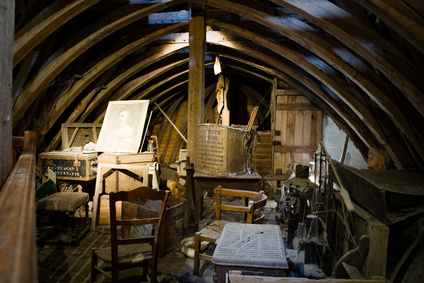A firm launches a new in-vehicle data service based on supplying relevant information to the passenger’s preferences. Traffic signal coordination is driven by an intelligent algorithm that takes into account time of day, ambient atmospheric pollution and congestion. A smart home system allows your content to follow you out of your house and into your car, rendering the content to video or audio depending on your device.
What’s common about all of the above? Well two things: they are all currently available technologies (or are being brought to market now) and two, they were all tried a decade ago.
There is an old adage in real estate that says that in commercial development, it’s the first guy in who takes all the risks – and that many times it’s much better to purchase a property once it’s been established. It turns out that often those on the front edge wind up surrendering their hard work at a huge discount to the new owners.
Similarly, companies with some history usually have some things they have tried, but for many reasons, did not take hold. In very large firms this may be a long list (check out Google graveyard for instance), but even smaller private firms can have programs that were once thought to be the next big thing that are now “on the shelf.”
The number one reason that projects get put on the shelf is that at the time they were pursued, the group leading them could not find a “product market fit.” This is business speak for it was too expensive for the benefits delivered (or perceived) for the group of people that is was marketed to.
This is not surprising at all – if you go back to this post where we talked about how long it takes to find a viable business case for a new-to-the-world invention (hint, it’s almost universally three decades) the chances of hitting it perfectly in round one is quite low.
The key thing that makes old projects a great place to go hunting is the effect of time. We know that time allows technology, distribution, consumer education, business value chains and a host of other important elements to mature and get more efficient and cost effective. This has the effect of allowing things that could not be delivered as originally conceived, suddenly become useful.
The shrewd strategist keeps a “book” of those areas that are waiting for the right puzzle piece to become viable.
Here are some useful examples:
- The iPhone needed to be able to break through the carrier’s lock on content
- The iPod needed access to the music catalogue
- Connected vehicles needed high-speed intelligence and adaptive algorithms
- Fiber networks allowed worldwide, real-time teleconferencing
- On-demand video needed first high-speed data to the home, and then the ability to be viewed on our mobile devices
- Amazon opened the pathway for “click” to door delivery
So how do you practically put this into action?
- Canvas the curmudgeons. Have coffee with people that have “been around” and be curious. Ask questions about what they tried, what they ran into and keep notes. Think deeply about what has changed since they worked on it.
- Put ideas into categories. What didn’t it make it? Keep notes of your own experiences, and be a student of launches in adjacent markets and areas that your customers chat about. Here are some patterns to look for:
- Too different (the market didn’t understand it)
- Too expensive (relative to the current offerings)
- Amazing (too hard to build reliably)
- Before its time (solves an upcoming problem)
- Choose your targets based on what changed. When something changes, take one of these off the shelf and do some brainstorming to see if they are now viable. Check areas like these:
- We have a new path to market due to an acquisition
- Capability has gotten much cheaper to provide
- We have better manufacturing
- The problem has become more valuable
A final example. When I was at a large electronics manufacturer earlier in my career, they had a substantial & well-funded R&D team. This team had the ability to set an independent agenda based on future needs that were well ahead of the market, and had built a nice portfolio of wireless tools that were specifically targeted to reliable data connections to mobile units moving at high relative speed.
I was able to “find” these on the “technology shelf” by doing some market survey work, then having lots of coffee with the sage subject matter experts at the time. Finding these, and doing some careful market development, led the an emergent capability just as connecting vehicles became a very hot application indeed. The moral of the story is every large “new thing” is a combination of many “old things” and a fresh insight.
I’ve just had time to expose the tip of the iceberg in this post. If you’d like to have a 20-minute exploratory conversation on how to find these hidden gems, drop me an email or call me at 847-651-1014.
Related posts you can benefit from…


